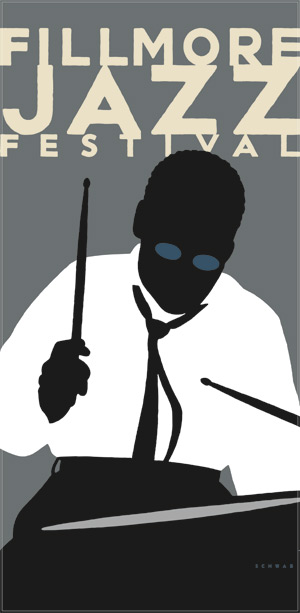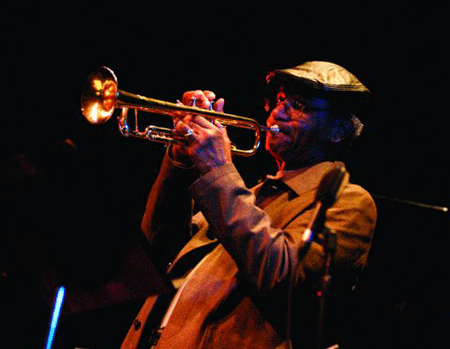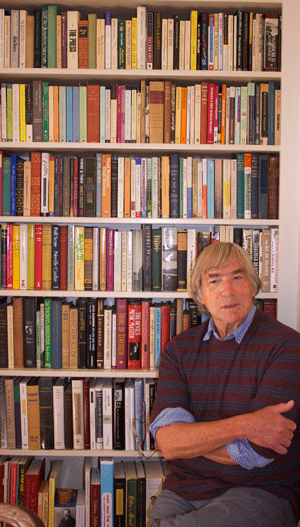Q & A | ARTHUR BLOOMFIELD

What motivated you to write “More Than the Notes,” your new e-book on legendary conductors of the 19th century?
When I was 11, my mother started taking me downtown once a month to the White House department store. It was where Banana Republic is now. Up on the fourth floor they had a record department. She’d buy me old Victor and Columbia albums. And she also gave me a book of record reviews. I said: “What’s the point? Isn’t Beethoven’s Fifth always the same?” She emphatically said no. In a way, that was the genesis of this book.
Even then you lived in the neighborhood?
I grew up in Presidio Heights at Clay and Locust and went to the old Town School on Alta Plaza Park. My father was a professor at Stanford Medical School, which is now California Pacific Medical Center. We would take the No. 4 streetcar along Sacramento Street, down Fillmore to Sutter, make a left and go downtown.
And those trips downtown led you to become a music critic.
In the ’60s and ’70s I was a music critic for the Call-Bulletin, which became the News-Call-Bulletin, and later for the old Examiner. I left the Examiner to become a freelance writer, mostly on music and food. I spent a lot of the 1980s researching the conductors book.
You say the book aims to clear up some of the “received wisdom” about conductors. In what way?
I had long felt there was not a book that made a sufficient distinction between conductors — nor a book that told enough about what conductors really do: What are the decisions they make about tempo, balance, etc., all of which can affect the emotion of the performance as it goes from mood to mood. What this book does, first, is tell the kind of decisions a particular conductor made. You get some sense of how his mind works. And second — and quite important — you get a good idea of the many ways in which the secrets of a score can be discovered. There’s a great quote from the English writer and pianist Susan Tomes: “The score is the map, but not the journey.”
Your book itself is something of a tome.
It’s about 100,000 words. I’ve been working on it a lot for about four years — but I’ve been thinking about it for 30 years.
And yet it’s not a book, but a website with sound clips.
The advent of the technology — to have sound clips — came at a perfect time. It’s on the cutting edge. I wasn’t accustomed to listening to music on my computer, but when I heard the sound coming out, I was ecstatic. And I had Dick Wahlberg a block up Webster Street to help. He also grew up in Presidio Heights. He uses my basement to store part of his record collection and is a great sound engineer. So I had technical help nearby I’d known forever. We had a number of sessions making the clips and decided together when the clips should begin and end. It was uncanny how often we agreed. Sometimes we worked from 78s, sometimes 33s, sometimes open-reel tapes. I had almost all of the clips in my own record library. Maybe I got a couple from Dick, but between us we had them all. Then I delivered my text and the master CD with the sound clips to the site designer and engineer. By some mysterious means, they turned them into a website. What we’ve done may be unique. Just click on the megaphone and you can play the exact passage in the exact Beethoven recording I’m writing about. It’s like a time machine.
This is your third book in recent years — and your second online book.
“The Gastronical Tourist” was published in 2002 and had a life of its own as a book. Then in 2007 we put it online. The numbers went up from practically zero to 60,000. And “Gables and Fables” — the book of Pacific Heights architectural history based on my wife Anne’s columns from the New Fillmore — was published in 2007. It’s still available at Browser Books on Fillmore.
Has it been an adjustment to see this new book online rather than on the bookshelf?
It’s been a revelation. Last night I googled the book. There’s something about turning on the screen and seeing all those cross-references. It’s satisfying — and you certainly get much better numbers. I’m a great devotee of Browser Books. I practically live in there sometimes. So it was a little wrenching at first that this new book won’t be there, or in the symphony shop. But I’ve gotten over that. And it’s free. It’s there for the tasting.
Go to “More Than the Notes“
Filed under: Books, Locals, Music | Leave a Comment »



 Globetrotting jazz vocalist Kitty Margolis returns to Fillmore — source of some of her earliest musical inspiration — for her debut performance at Yoshi’s on June 24.
Globetrotting jazz vocalist Kitty Margolis returns to Fillmore — source of some of her earliest musical inspiration — for her debut performance at Yoshi’s on June 24.







